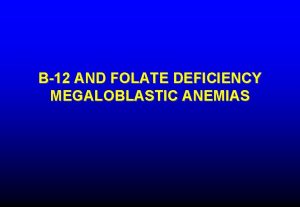logo RENINANGIOTENSIN SYSTEM GENE POLYMORPHISMS FOLATE RELATED GENE

- Slides: 1

logo RENIN-ANGIOTENSIN SYSTEM GENE POLYMORPHISMS, FOLATE RELATED GENE POLYMORPHISM AND CARDIOVASCULAR RISK FACTORS IN PREGNANT WOMEN WITH DIFFERENT FORMS OF HYPERTENSION Chulkov V. , Vereina N. , Sinitsin S. , Dolgushina V. South Ural State Medical University, Chelyabinsk, Russia Introduction Results The hypertensive disorders of pregnancy remain the leading causes of maternal and perinatal morbidity and mortality [1, 2, 3]. Despite the similarities, each form of hypertension during pregnancy has its outcome. Therefore, the investigations of characteristics of genetic and cardiovascular risk factors in different forms of hypertension are necessary to carry out [4, 5]. Data about distribution of cardiovascular risk factors in pregnant women are shown in Figure 2. Materials and Methods Objectives: to study the frequency of occurrence of cardiovascular risk factors, renin-angiotensin system and folate related gene polymorphisms in pregnant women with different forms of hypertension. Patients and Methods. Prospective cohort study. Recruitment was carried out of the patients who were referred from the antenatal clinics of Chelyabinsk (Russia) to the Outpatient Department of Pathology of haemostasis. Figure 2. Cardiovascular risk factors in pregnant women with different forms of hypertension (P < 0, 05: *- gr. 1, gr. 2, gr. 3, gr. 4 vs control) Genotypes and allele frequencies of renin angiotensin system gene polymorphisms, folate related gene polymorphism are shown in Table 1. Inclusion criteria: pregnancy, age from 18 to 44 years; consent to participate. Exclusion criteria: secondary hypertension, systemic connective tissue diseases; mental disorders. Overall 300 patients were included (200 – with hypertension, 100 – without hypertension) Patients with hypertension were divided into 4 groups (Figure 1): D allel ACE I/D DDgenotype ACE I/D C allel A 1166 C ATR 1 T allel C 677 T MTHFR CTM allel MM genotype T 174 M genotype. C 677 T AGT T 174 M MTHFR AGT Group 1 77, 8* 44, 4 * 57, 8 * 82, 2 * 80 * 46, 7 0 Group 2 55 20 0 69, 6 70 50 5 Group 3 80 10 10 70, 0 70 70 * 20 * Group 4 66, 7 * 33, 3 86, 7 * 26, 7 0 Control 51, 4 2, 9 28, 6 42, 9 51, 4 22, 9 0 Table 1. Genotypes and allele frequencies of reninangiotensin system and folate related gene polymorphisms (p < 0, 05: *- gr. 1, gr. 3, gr. 4 vs control) Conclusions Figure 1. Structure of hypertension in pregnant women (n 200) Group 1 – chronic hypertension, n 106 (53%) (31± 4, 7 years) (M±σ) ( Group 2 – gestational hypertension, n 63 (31, 5%) (26± 4, 4 years) Group 3 – preeclampsia, n 10 (5%) (25± 3, 6 years) Group 4 – preeclampsia superimposed on chronic hypertension n 21 (10, 5%) (30± 5, 1 years) Control group: 100 women without hypertension (26± 4, 4 years). Methods: clinical examination; analysis of all current medical records; polymorphism genotype analysis angiotensin-converting enzyme (ACE I/D), angiotensinogen (AGT 174 T/M), angiotensin II type 1 receptor (ATR 1 1166 A/C), methylenetetrahydrofolate reductase (MTHFR 677 C/T) by polymerase chain reaction ( «Lytech» , Russia), amplificator Tercik-TP-RCR-01 (DNA-Technology, Russia). Statistical analysis was performed with software Med. Calc® Version 11. 5. 0. The χ2 test, Fisher’s exact test were used as appropriate for comparisons between baseline characteristics and genetic backgrounds. Our study has found that pregnant women with different forms of hypertension had particularities of the distribution of cardiovascular risk factors, reninangiotensin system and folate related gene polymorphisms: 1. Pregnant women with chronic hypertension and with preeclampsia superimposed on chronic hypertension were more frequently of age over 35 years, overweight, obese and smoking and a high incidence of hypertension in the family history compared with pregnant women without hypertension. 2. In pregnant women with chronic hypertension a higher frequency of D allele and DD-genotype of angiotensinconverting enzyme gene (ACE I/D), C allele of angiotensin II type 1 receptor (ATR 1 A 1166 C), T allele and CT-genotype methylenetetrahydrofolate reductase gene (MTHFR C 677 T) were observed and compared with a control group. 3. In pregnant women with preeclampsia a higher frequency of M allele and MM-genotype angiotensinogen gene (AGT T 174 M) was noted. References 1. Magee, L. A. Pels, A. , Helewa, M. , Rey, E. , von Dadelszen, P. Diagnosis, evaluation, and management of the hypertensive disorders of pregnancy // Pregn. Hypertens. – 2014. – Vol. – 4. – P. 105– 145. 2. Diagnosis and treatment of cardiovascular diseases during pregnancy. Russian recommendations // Russian Journal of Cardiology. – 2013. – Vol. 4 (102), application 1. – P. 1 -40. 3. Hypertension in pregnancy. Report of the American College of Obstetricians and Gynecologists’ Task Force on Hypertension in Pregnancy. American College of Obstetricians and Gynecologists; Task Force on Hypertension in Pregnancy // Obstet. Gynecol. – 2013. – Vol. 122(5). – P. 1122– 1131. 4. Magnussen E. B. , Vatten L. J. , Smith G. D. et al. Hypertensive disorders in pregnancy and subsequently measured cardiovascular risk factors // Obstet. Gynecol. – 2009. – Vol. 114. – P. 961– 970. 5. Nakayama T. , Yamamoto T. Comparison between essential hypertension and pregnancy-induced hypertension: a genetic perspective // Endocrine Journal. – 2009. – Vol. 56 (8). – P. 921 -934. Сontact information: Vasiliy Chulkov – Associate Professor of Faculty Therapy Department, South Ural State Medical University, Chelyabinsk, Russia. E-mail: vschulkov@rambler. ru

